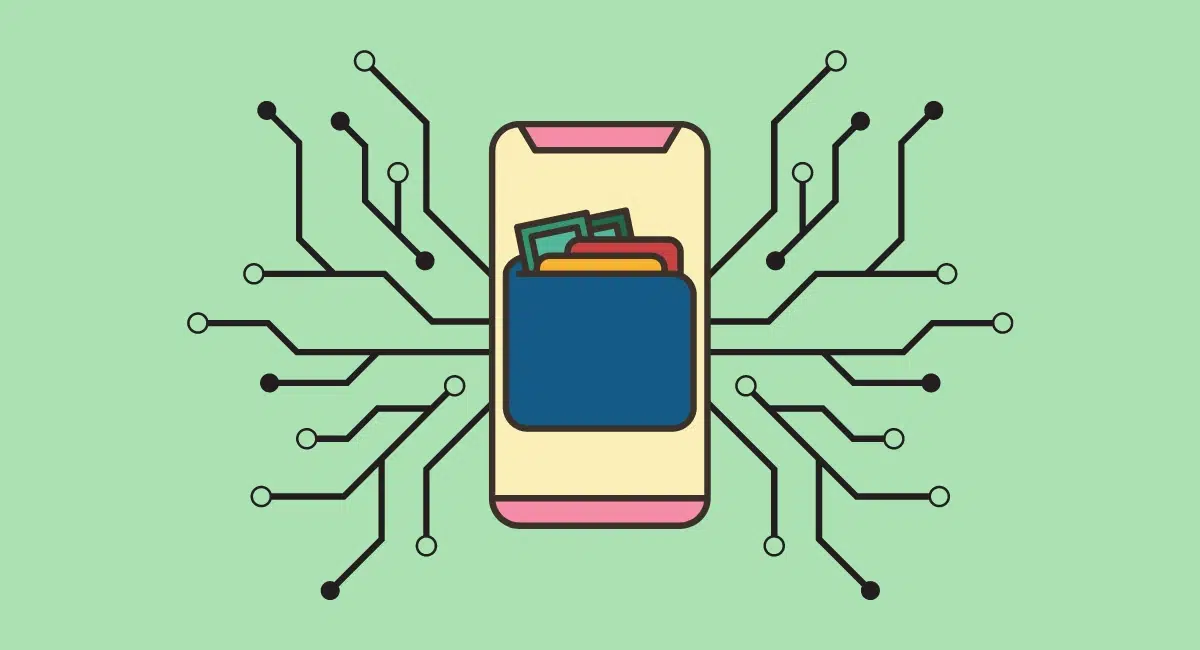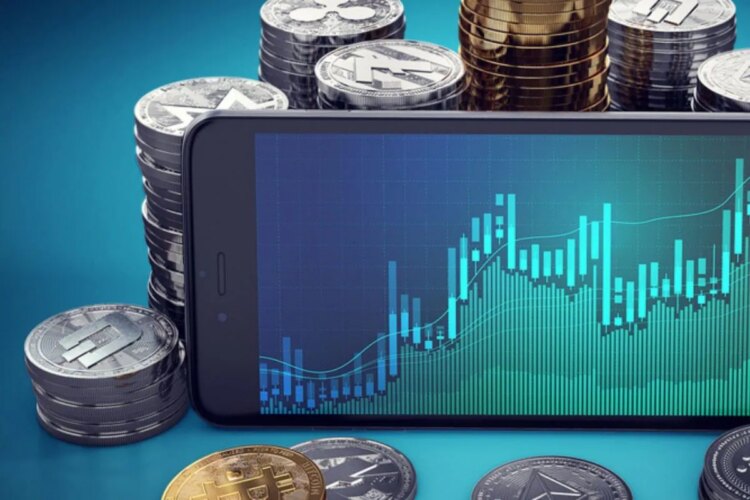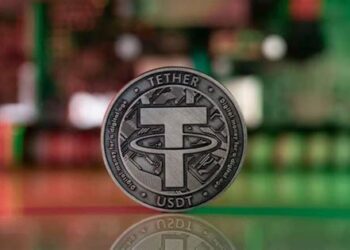Defining Digital Money

At its core, digital money refers to any form of currency or monetary value that exists purely in electronic form, without a physical counterpart. While traditional bank deposits accessed via debit cards or online transfers are “digital” in a broad sense, the “future of digital money” typically refers to more advanced forms that leverage new technologies and offer distinct features.
A. Electronic Funds Transfer (EFT): This is the foundational layer. EFT systems allow for the transfer of funds between bank accounts electronically. Examples include wire transfers, Automated Clearing House (ACH) payments, and interbank payment systems. While fundamental, these are typically considered “digital representations of fiat currency” rather than new forms of digital money.
B. Cryptocurrencies: These are decentralized digital or virtual currencies that use cryptography for security. They are typically based on blockchain technology, a distributed ledger that records transactions across a network of computers.
1. Decentralization: Unlike traditional currencies, cryptocurrencies are not issued or controlled by a central authority (like a central bank or government).
2. Immutability: Once recorded on a blockchain, transactions are generally irreversible and tamper-proof.
3. Transparency (Pseudonymous): While transactions are public on the blockchain, the identities of the participants are typically pseudonymous rather than directly linked to real-world identities.
4. Examples: Bitcoin, Ethereum, Litecoin.
C. Stablecoins: A type of cryptocurrency designed to maintain a stable value relative to a “stable” asset, such as a fiat currency (e.g., the U.S. dollar), a commodity (e.g., gold), or another cryptocurrency. They aim to combine the benefits of cryptocurrencies (speed, low cost, decentralization) with the stability of traditional currencies.
1. Fiat-Collateralized: Backed 1:1 by reserves of fiat currency held in traditional bank accounts (e.g., Tether, USDC).
2. Commodity-Collateralized: Backed by physical assets like gold or real estate.
3. Crypto-Collateralized: Backed by other cryptocurrencies, often overcollateralized to manage volatility.
4. Algorithmic: Rely on algorithms and smart contracts to maintain their peg, without direct collateral (though many such projects have faced stability issues).
D. Central Bank Digital Currencies (CBDCs): A digital form of a country’s fiat currency, issued and backed by its central bank. Unlike cryptocurrencies, CBDCs are centralized and represent a direct liability of the central bank, just like physical banknotes.
1. Wholesale CBDCs: Designed for interbank settlements and large-value transactions, improving efficiency and reducing risk in wholesale financial markets.
2. Retail CBDCs: Intended for general public use, potentially offering a digital alternative to cash and traditional bank deposits.
3. Key Motivations: Include enhancing payment efficiency, promoting financial inclusion, improving monetary policy transmission, countering the rise of private digital currencies, and strengthening financial stability.
E. Tokenized Assets: The process of converting rights to an asset (physical or digital) into a digital token on a blockchain. This can apply to real estate, art, intellectual property, equities, or even debt instruments. Tokenization can increase liquidity, fractional ownership, and ease of transfer for traditionally illiquid assets.
Technological Bedrock
The rapid evolution of digital money is inextricably linked to advancements in underlying technologies, particularly blockchain and distributed ledger technology (DLT).
A. Blockchain and Distributed Ledger Technology (DLT):
1. Decentralized Record-Keeping: DLT maintains a shared, synchronized, and immutable record of transactions across multiple participants, eliminating the need for a central intermediary.
2. Cryptography for Security: Cryptographic techniques ensure the integrity and authenticity of transactions, making them highly secure and resistant to fraud.
3. Consensus Mechanisms: Protocols (e.g., Proof of Work, Proof of Stake) that ensure all participants agree on the validity of transactions before they are added to the ledger, preventing double-spending.
4. Smart Contracts: Self-executing contracts with the terms of the agreement directly written into code. They automatically execute predefined actions when certain conditions are met, enabling automated payments, escrow services, and more complex financial agreements.
B. Cryptographic Primitives: The use of hash functions, public-key cryptography, and digital signatures is fundamental to securing digital money transactions, verifying ownership, and ensuring privacy.
C. Interoperability Solutions: As different digital money systems emerge (e.g., various CBDCs, private stablecoins, different blockchain networks), solutions for interoperability will be crucial. This involves developing standards and protocols that allow these disparate systems to communicate and transact seamlessly, preventing fragmentation of the digital financial ecosystem.
D. Scalability Solutions: Early blockchain networks, particularly Bitcoin and Ethereum, faced scalability challenges (limited transaction throughput). Ongoing research and development into Layer 2 solutions (e.g., Lightning Network, rollups), sharding, and alternative DLT architectures aim to increase transaction processing capacity to handle mainstream adoption.
E. Zero-Knowledge Proofs (ZKPs): A cryptographic technique that allows one party to prove that they know a piece of information without revealing the information itself. This is vital for enhancing privacy in digital money transactions, especially for CBDCs or enterprise-grade DLT solutions where confidentiality is required.
Transformative Implications for Global Finance

The widespread adoption of digital money, in its various forms, has profound implications for every aspect of the financial ecosystem.
A. Enhanced Payment Efficiency and Speed: Digital money offers the potential for instant, 24/7, peer-to-peer transactions, bypassing traditional banking hours and lengthy settlement times. This can significantly reduce transaction costs, especially for cross-border payments, making remittances cheaper and faster.
B. Financial Inclusion: For the unbanked and underbanked populations globally, especially in developing economies, digital money can provide access to financial services without the need for traditional bank accounts. CBDCs, in particular, could offer a direct, low-cost way for individuals to access central bank money.
C. Monetary Policy Effectiveness: CBDCs could provide central banks with new tools for monetary policy implementation, potentially allowing for more precise control over the money supply and even targeted stimulus measures during economic downturns. It could also provide richer data for economic analysis.
D. Reduced Counterparty Risk: In some digital money systems, especially wholesale CBDCs or DLT-based interbank settlement, the elimination of intermediaries can reduce counterparty risk and settlement risk, making the financial system more robust.
E. Innovation in Financial Services (DeFi): The emergence of decentralized finance (DeFi) platforms, built on blockchain technology, offers a suite of financial services (lending, borrowing, trading, insurance) without traditional intermediaries. This can foster innovation, competition, and potentially lower costs.
F. New Business Models: Digital money facilitates new business models, such as micropayments for content or services, tokenized economies within online platforms, and innovative financing mechanisms (e.g., crowdfunding via security tokens).
G. Greater Transparency and Auditability: Blockchain-based digital money offers a transparent and auditable record of transactions, which can help combat illicit activities like money laundering and terrorist financing, provided appropriate regulatory frameworks are in place.
Challenges and Regulatory Complexities
Despite its transformative potential, the future of digital money is fraught with significant challenges that require careful navigation and robust regulatory frameworks.
A. Regulatory Uncertainty and Fragmented Governance: The rapid pace of innovation in digital money has outstripped regulatory development. Governments worldwide are grappling with how to classify, regulate, and supervise various forms of digital money, leading to a fragmented and often inconsistent regulatory landscape. This uncertainty can hinder adoption and foster illicit activities.
B. Financial Stability Risks:
1. Bank Disintermediation: Retail CBDCs could potentially lead to large-scale shifts of funds from commercial banks to the central bank, impacting bank liquidity and their ability to lend.
2. Cybersecurity Risks: Digital money systems are attractive targets for cyberattacks. Robust cybersecurity measures are essential to prevent theft, fraud, and systemic disruptions.
3. Systemic Risk from Stablecoins: If a major stablecoin were to lose its peg or face a run, it could create broader instability in financial markets, especially if widely used for payments or collateral.
C. Privacy Concerns: While cryptocurrencies offer pseudonymity, the traceability of transactions on public blockchains raises privacy concerns, particularly for retail CBDCs where governments might have unprecedented insight into citizens’ financial activities. Balancing privacy with anti-money laundering (AML) and counter-terrorist financing (CTF) requirements is a delicate act.
D. Scalability and Interoperability: For digital money to achieve widespread adoption, underlying technologies must be able to handle immense transaction volumes (scalability). Furthermore, different digital currencies and platforms must be able to seamlessly interact (interoperability) to avoid a fragmented financial ecosystem.
E. Legal Status and Consumer Protection: The legal status of different forms of digital money varies widely across jurisdictions, impacting consumer protection, ownership rights, and dispute resolution. Clear legal frameworks are needed to provide certainty and build trust.
F. Energy Consumption (for Proof-of-Work Cryptocurrencies): Some major cryptocurrencies, particularly those using Proof-of-Work consensus mechanisms (like Bitcoin), have a substantial energy footprint, raising environmental concerns. This is driving a shift towards more energy-efficient alternatives (e.g., Proof-of-Stake).
G. Digital Divide and Financial Exclusion: While digital money can promote financial inclusion, it also risks exacerbating the digital divide if certain populations lack access to necessary technology, internet connectivity, or digital literacy.
The Potential Scenarios and Evolution
The future of digital money is not a single, predetermined path but rather a dynamic interplay of technological advancement, regulatory decisions, and market adoption. Several scenarios could unfold.
A. Dominance of CBDCs: Many central banks are actively exploring or developing CBDCs. If successful, CBDCs could become the primary form of digital money, coexisting with traditional bank deposits and potentially marginalizing private stablecoins and even some cryptocurrencies as means of payment. This would largely maintain the existing centralized financial structure but in a digital format.
B. Coexistence of Multiple Digital Forms: A more likely scenario is a hybrid ecosystem where CBDCs, well-regulated stablecoins, and certain utility-driven cryptocurrencies coexist and compete. Each form of digital money might find its niche, catering to different needs (e.g., CBDCs for core payments, stablecoins for DeFi, specific cryptocurrencies for niche applications).
C. Continued Growth of Decentralized Finance (DeFi): DeFi could continue to innovate and expand, offering alternative financial services independent of traditional institutions. However, it will likely face increasing regulatory scrutiny as it grows, potentially leading to a more regulated or “permissioned” DeFi ecosystem.
D. Tokenization of Everything: The trend of tokenizing real-world assets is expected to accelerate. This could lead to massive liquidity, fractional ownership, and more efficient trading of a wide range of assets, from real estate to intellectual property rights, all managed on DLTs.
E. Interoperability as a Key Driver: The development of robust interoperability frameworks and standards will be crucial to prevent the digital financial landscape from becoming fragmented into isolated silos. Cross-chain bridges, standardized APIs, and common messaging protocols will be essential.
F. Enhanced Regulatory Clarity: As regulators gain a deeper understanding of digital money, clearer and more comprehensive regulatory frameworks are expected to emerge. This will likely involve a combination of new legislation, adaptations of existing laws, and international cooperation to prevent regulatory arbitrage.
G. Technological Advancements Continue: Ongoing research into quantum-resistant cryptography, advanced consensus mechanisms, and more efficient DLTs will continue to push the boundaries of what digital money can achieve, further enhancing security, scalability, and privacy.
Conclusion
The future of digital money represents a profound paradigm shift in global finance, promising a more efficient, accessible, and potentially more equitable financial system. From the decentralized innovations of cryptocurrencies to the state-backed certainty of CBDCs and the transformative potential of tokenized assets, the landscape is diverse and rapidly evolving.
While the benefits—including faster payments, lower costs, and enhanced financial inclusion—are compelling, the journey ahead is fraught with significant challenges. Regulatory uncertainty, financial stability risks, privacy concerns, and the need for robust technological infrastructure all demand careful consideration and collaborative solutions from policymakers, innovators, and the public.
Ultimately, the trajectory of digital money will be shaped by a delicate balance between fostering innovation and ensuring financial stability, consumer protection, and responsible governance. As we stand on the cusp of this digital financial revolution, understanding its nuances and actively participating in its development will be crucial for unlocking its full potential and building a resilient and inclusive financial future for all. The digital transformation of money is not just coming; it is already here, and its evolution will define the next era of global commerce and finance.











